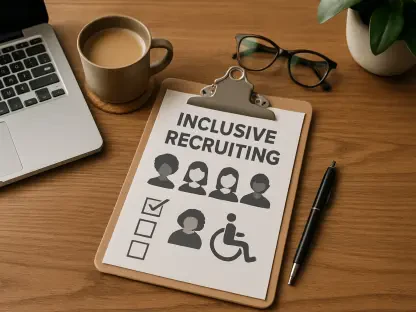In a significant step towards transparency and inclusivity, the Limerick City and County Council has released its 2024 Gender Pay Gap Report, shedding light on the discrepancies in average hourly wages between men and women within its workforce. The publication of such data is a mandatory requirement for employers in Ireland with more than 150 employees, due by the end of 2024, six months after the reference date of June 30. This report offers a detailed look into both the mean and median gender pay gaps, revealing a nuanced picture of wage disparities and prompting discussions on equality in the workplace.
Analysis of Gender Pay Gap Statistics
Examination of Mean and Median Gender Pay Gaps
The report unveiled a mean gender pay gap of 1.72%, indicating that on average, men earn 1.72% more per hour than their female counterparts. This figure is an improvement from the previous year when the mean gender pay gap stood at 3.88%. Meanwhile, the median gender pay gap is -5.50%, showing that the median hourly wage for women is 5.5% higher than that for men. This median figure also marks an improvement from 2023’s median gap of -5.61%.
These statistics suggest that while there is progress in narrowing wage disparities, the situation is complex. The mean wage difference points to a slight advantage for men, yet the median wage indicates a relative benefit for women at the central point of the pay distribution. This duality implies that more women might be occupying lower-paid roles, but those in the median range or higher ranks tend to earn more than their male peers. Such insights are crucial for crafting targeted policies to address underlying factors contributing to these gaps.
Trends and Comparisons to Previous Years
Dr. Pat Daly, Director General of Limerick City and County Council, highlighted the positive trend in these figures, emphasizing that the reduction in the mean gender pay gap is a step in the right direction. However, Dr. Daly also acknowledged the need for continued efforts to achieve complete pay parity. He pointed out that while the numbers reflect progress, they nonetheless underscore areas where inequalities persist. The Council’s ongoing commitment to equality, diversity, and inclusion initiatives is seen as pivotal in sustaining and accelerating this positive trend.
Comparing the 2024 report to previous years, it becomes apparent that the Council has made strides in addressing wage disparities. The improvements in both mean and median pay gaps are significant, suggesting that recent initiatives aimed at promoting gender equality are bearing fruit. The reduction in the mean pay gap from 3.88% to 1.72% signals a concerted effort to address structural issues, while the consistent improvement in the median gap points to potential shifts in career progression and recognition for women within the organization.
Workforce Inclusivity and Equal Opportunities
Commitment to an Inclusive Workplace
The Limerick City and County Council’s commitment to an open and inclusive workplace is underscored by its rigorous approach to monitoring and reporting on gender pay disparities. Dr. Daly emphasized that transparency in these matters is not just a regulatory requirement but a fundamental aspect of the Council’s ethos. By actively publishing this data, the Council aims to foster an environment where all employees feel valued and fairly compensated. This approach is integral to the broader goal of ensuring that equality and inclusivity are not merely aspirational but actively practiced within the workplace.
A key focus of the Council’s strategy involves implementing various equality, diversity, and inclusion (EDI) initiatives. These initiatives are designed to create a supportive work environment that promotes career development and recognition for all employees, regardless of gender. The Council believes that by offering equal opportunities for advancement and ensuring that merit is the basis for promotions and pay rises, they can further narrow the gender pay gap. Regular assessments and adjustments to EDI programs ensure that they remain effective and responsive to the needs of the workforce.
Distinction Between Gender Pay Gap and Equal Pay
It is essential to differentiate between the gender pay gap and equal pay, as the two concepts are often conflated. Equal pay is mandated by Employment Equality legislation, which requires that men and women are paid equally for performing similar work. In contrast, the gender pay gap measures the percentage difference between the average earnings of men and women across the entire workforce, without accounting for the nature of their roles. This distinction is crucial for understanding the broader implications of the pay gap data and for addressing the systemic issues that contribute to wage disparities.
Pay rates within the local government sector, including Limerick City and County Council, are determined through national wage agreements negotiated between employers and staff representatives. These agreements aim to standardize pay scales and ensure fairness across various roles. However, addressing the gender pay gap involves more than just compliance with national agreements. It requires a proactive approach to career development, staff recognition, and the creation of an inclusive work culture where all employees have the opportunity to thrive.
Conclusion
In an important move toward greater transparency and inclusivity, the Limerick City and County Council has unveiled its 2024 Gender Pay Gap Report. This report highlights the average hourly wage discrepancies between male and female employees within their workforce. Such data publication is mandatory for employers in Ireland with over 150 employees and must be completed by the end of 2024, six months after the June 30 reference date. This report provides an in-depth examination of both the mean and median gender pay gaps, presenting a detailed view of wage disparities. This initiative is part of a broader effort to encourage discussions on equality in the workplace, aiming to address and eventually eliminate these discrepancies. By making the data public, the council sets a standard for transparency and accountability, fostering a work environment that values fairness and strives to close the gender wage gap, thus promoting overall inclusivity within the city and county’s workforce.









